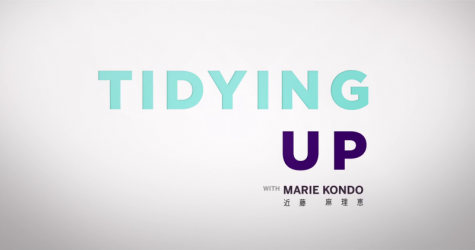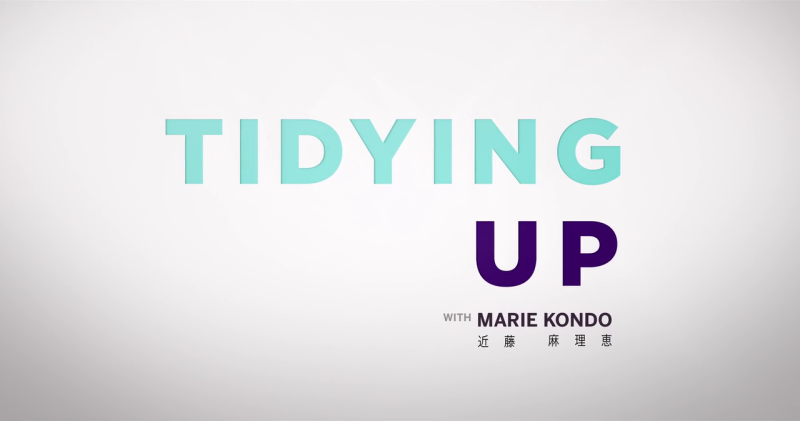Does “Tidying Up with Marie Kondo” Spark Joy?
March 18, 2019

“It changed my life; now that my stuff is organized, my mind is clearer.” On an average Saturday afternoon, I received this text from my good friend, Jane Schmelkin ’21, who informed me that she had reorganized her entire room according to the KonMari Method. Confused as to exactly what this method was, I asked for further explanation. She revealed that over the weekend, she had begun watching the first season of the show “Tidying Up with Marie Kondo.” This series follows the aforementioned Kondo, a distinguished tidiness master, as she visits homes that have their fair share of clutter.
What makes her style of organization different is the thought process behind it. The KonMari Method focuses on the spiritual connection we feel to objects such as clothing, books, papers, or sentimental items of the past. The emotional ties one feels to an article determine whether it should be abandoned or maintained. In order to keep an item, it must “spark joy,” a concept at which I initially scoffed. How is it possible for an ordinary pair of black leggings or an average pillow on my couch to incite a feeling? Furthermore, as someone on the lazier side of the spectrum, I wasn’t ecstatic to watch eight 35-45 minute episodes about cleaning someone else’s home. However, I was driven to try to understand the reason behind my friend’s claim of a life-changing experience to either discredit or validate it.
Unlike most reality shows that deal with home improvements, there is no competition, judgment, or criticism passed by Kondo. Instead, her priority is to evoke happiness through reconnecting with items of the past or present. Her goal is not to make the house appear as beautiful as possible, but to establish an order that may make a house feel more like a home. This is demonstrated from the moment Kondo walks through the door, as she requests the ability to “greet the house.” She kneels, closes her eyes, and silently expresses gratitude for the home in which she has entered. At first, I was baffled at the idea of this. Upon further reflection, no matter the ridiculousness this act poses, I believe that stopping once in a while to acknowledge the small luxuries of life may be a worthwhile quest. Kondo begins her system by asking her clients to remove every piece of clothing from their closet and place it into a pile. This establishes a mountain of clothes that allow for the person to grasp the reality of the amount of apparel they truly obtain. After, they must select each item one by one, thank the object of choice, and detect its ability to spark joy. This process of uncovering an item’s emotional value is repeated for books, papers, miscellaneous and sentimental articles.
Kondo and her methods do not solely influence the appearance of the room, but also the relationships that form within it. Kondo has a way about her that makes clients and viewers alike smile at her whimsical and warm-hearted ways that transform the air in a room. Despite the language barrier that requires an interpreter, anyone may feel an instant bond with Kondo. This is evident from the formal handshakes exchanged when first meeting her that shift to affectionate and grateful hugs after a limited period of time. What the show overcompensates for with the host’s personality, lacks in the actual entertainment of the show. I will admit, the show was more entertaining than expected due to the presence of authentic people and their relationships on the series. However, I often felt myself drifting off throughout certain points in each episode. It can become tedious after repeatedly going through the same scenario and continuously hearing the signature, yet overused phrase, “does it spark joy?”
After finishing the first season of the show, I still am not too convinced about the concept of an ordinary object “sparking joy.” Although an item may provoke emotion, when choosing to toss or keep a commodity there must be more to it than answering a four-word question. There are other factors that need to be considered, such as the practicality and usefulness of the article.


